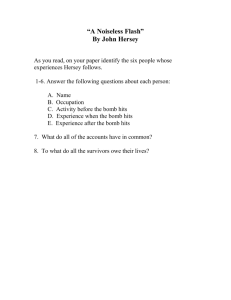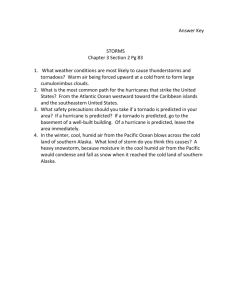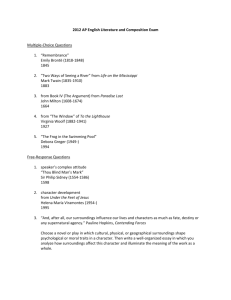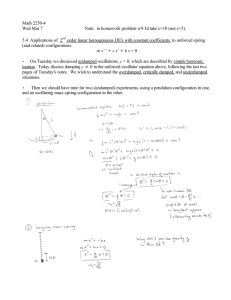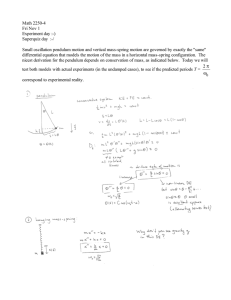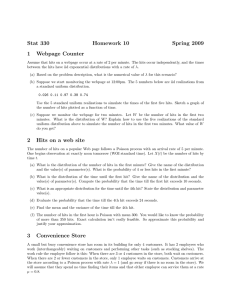homework for introduction to heat and temperature
advertisement
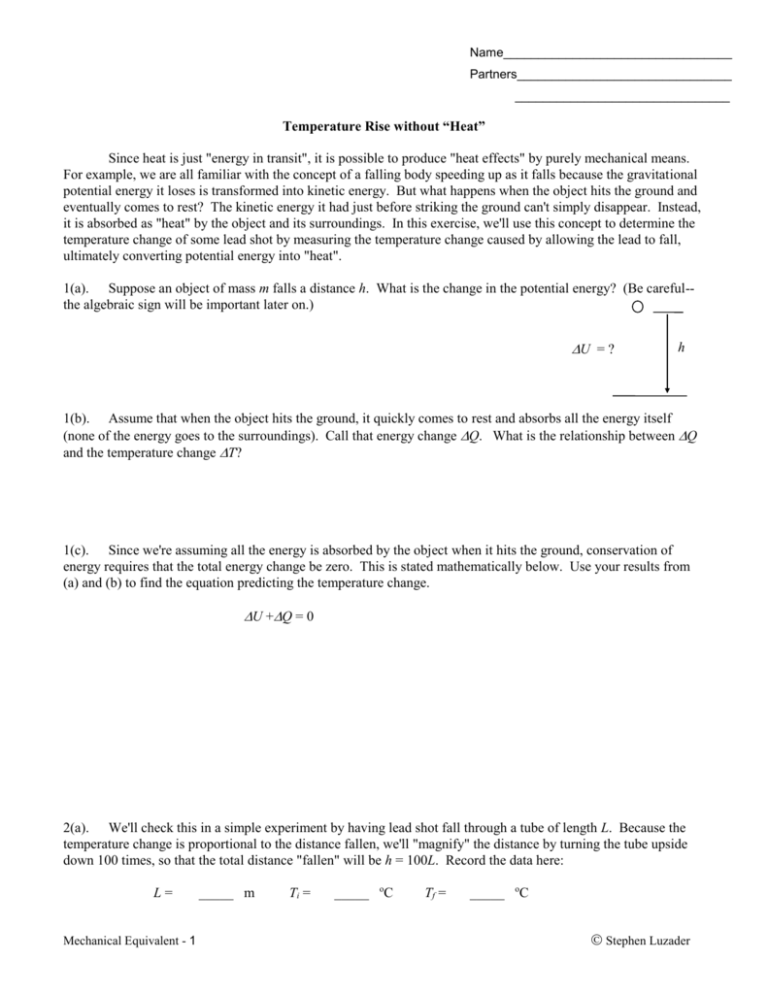
Name_________________________________ Partners_______________________________ _______________________________ Temperature Rise without “Heat” Since heat is just "energy in transit", it is possible to produce "heat effects" by purely mechanical means. For example, we are all familiar with the concept of a falling body speeding up as it falls because the gravitational potential energy it loses is transformed into kinetic energy. But what happens when the object hits the ground and eventually comes to rest? The kinetic energy it had just before striking the ground can't simply disappear. Instead, it is absorbed as "heat" by the object and its surroundings. In this exercise, we'll use this concept to determine the temperature change of some lead shot by measuring the temperature change caused by allowing the lead to fall, ultimately converting potential energy into "heat". 1(a). Suppose an object of mass m falls a distance h. What is the change in the potential energy? (Be careful-the algebraic sign will be important later on.) U = ? h 1(b). Assume that when the object hits the ground, it quickly comes to rest and absorbs all the energy itself (none of the energy goes to the surroundings). Call that energy change Q. What is the relationship between Q and the temperature change T? 1(c). Since we're assuming all the energy is absorbed by the object when it hits the ground, conservation of energy requires that the total energy change be zero. This is stated mathematically below. Use your results from (a) and (b) to find the equation predicting the temperature change. U +Q = 0 2(a). We'll check this in a simple experiment by having lead shot fall through a tube of length L. Because the temperature change is proportional to the distance fallen, we'll "magnify" the distance by turning the tube upside down 100 times, so that the total distance "fallen" will be h = 100L. Record the data here: L= Mechanical Equivalent - 1 _____ m Ti = _____ o C Tf = _____ o C Stephen Luzader 2(b). Record the observed temperature change here: Tobs = Tf - Ti = _____ 3. C Calculate the predicted temperature change using your answer to Question 1(c). Tpre = _____ 4. o o C How does the observed temperature change compare with the predicted temperature change? 5(a). What property or properties of the dropped object affect the temperature change? (For example, would the temperature change be different for large and small masses of the same material? Or does the temperature change depend on some other property of the dropped object?) 5(b). Why do you suppose a metal like lead rather than copper or iron was chosen for this experiment? (Hint: Think about the meaning of the specific heat capacity. Then look at how the predicted temperature change depends on specific heat and compare the specific heat of lead with that of other metals.) Mechanical Equivalent - 2 Stephen Luzader
